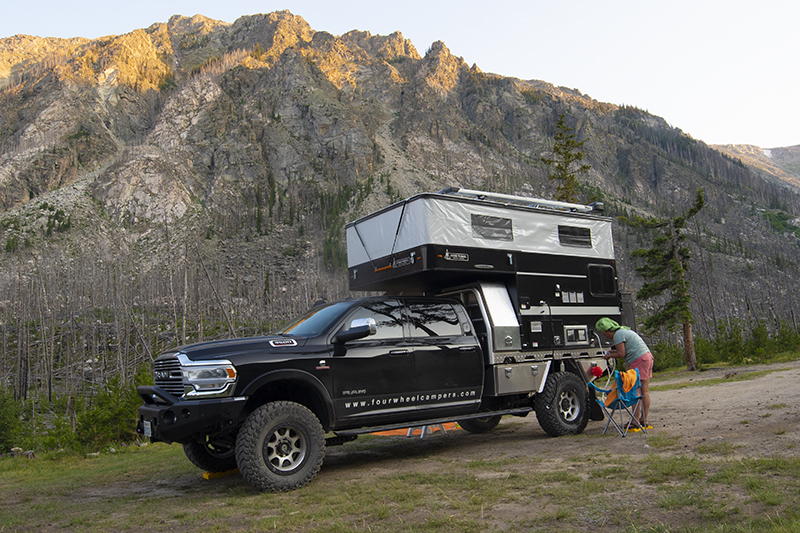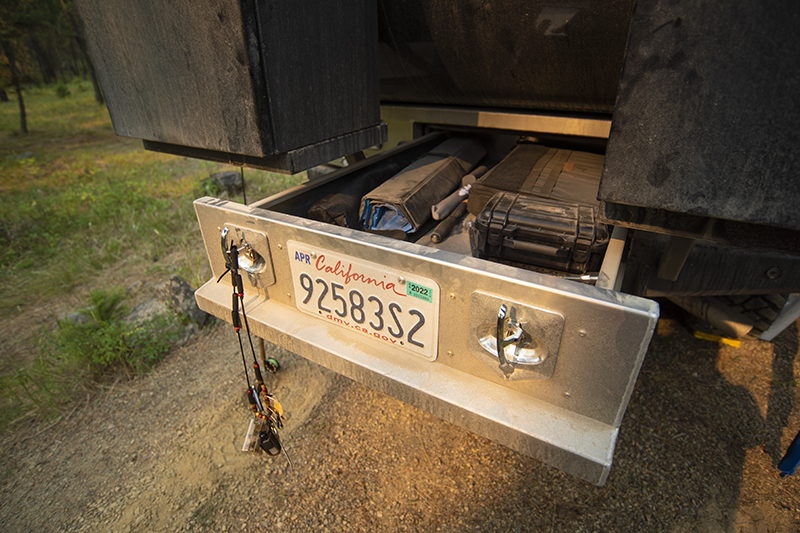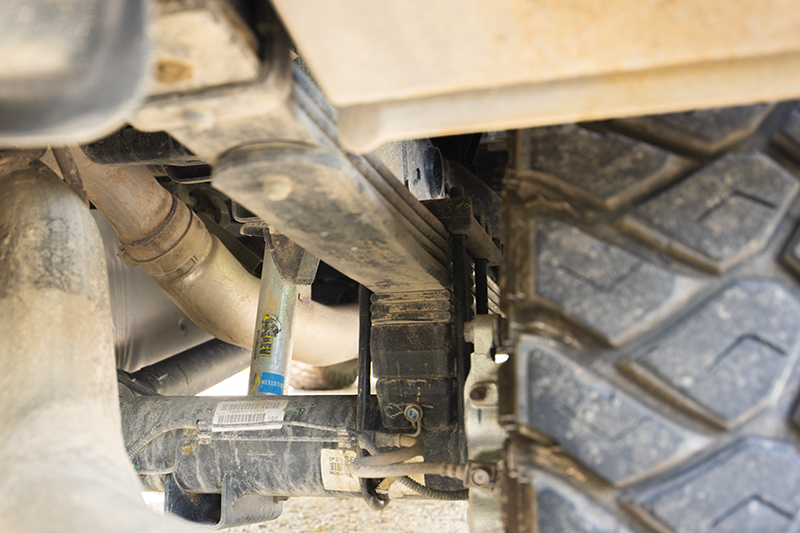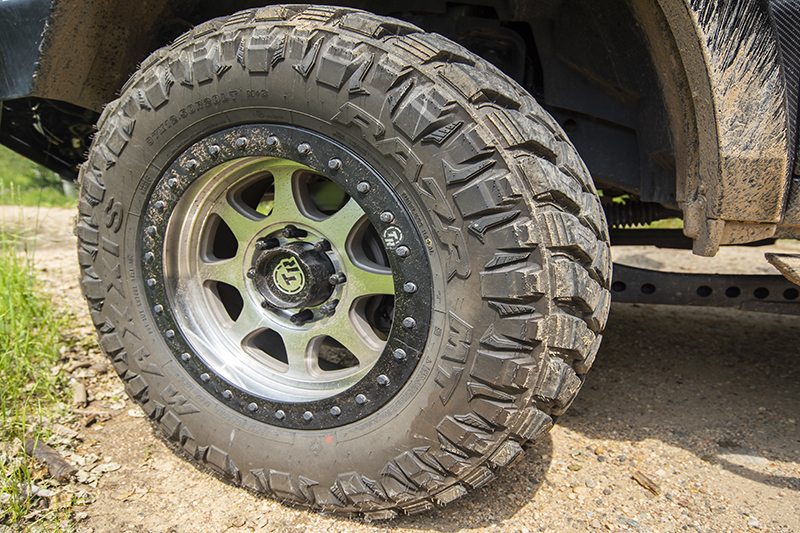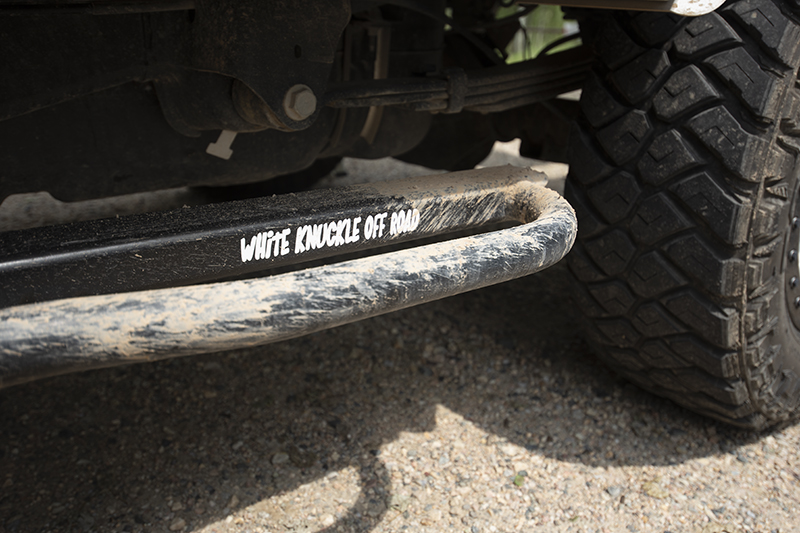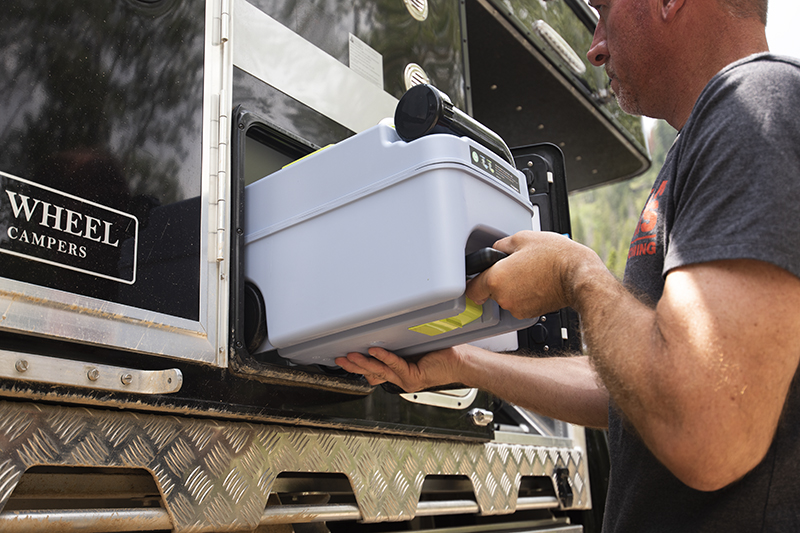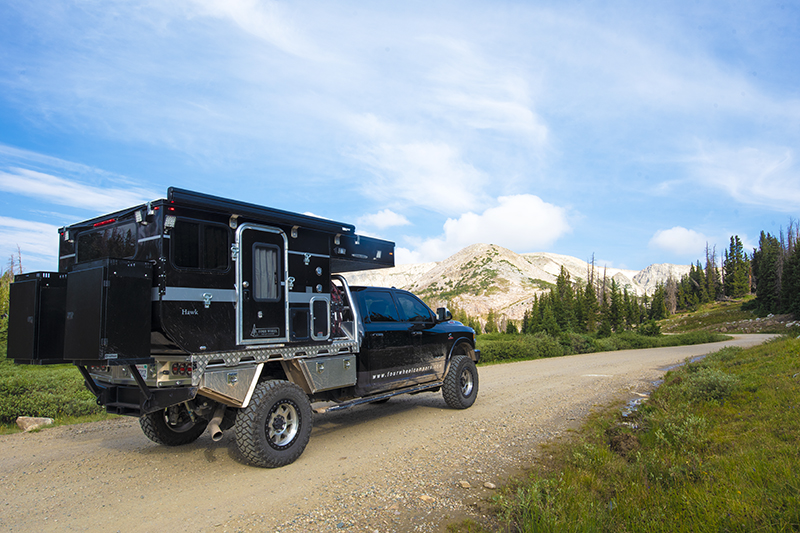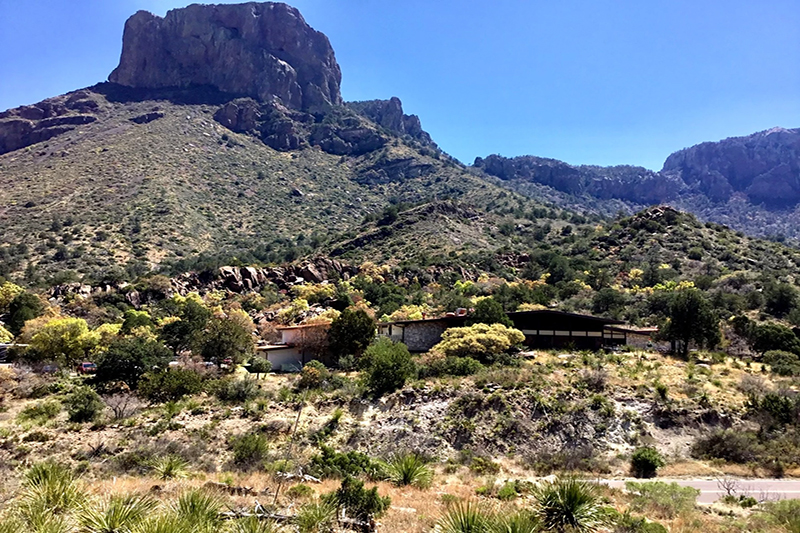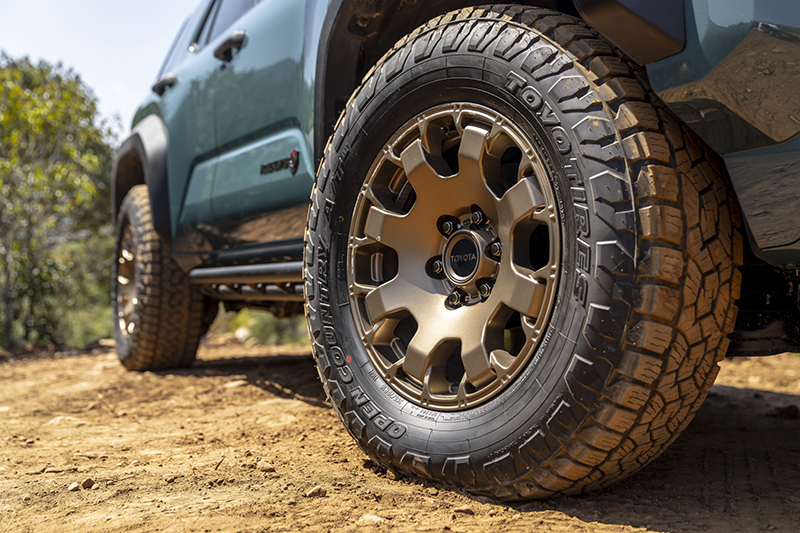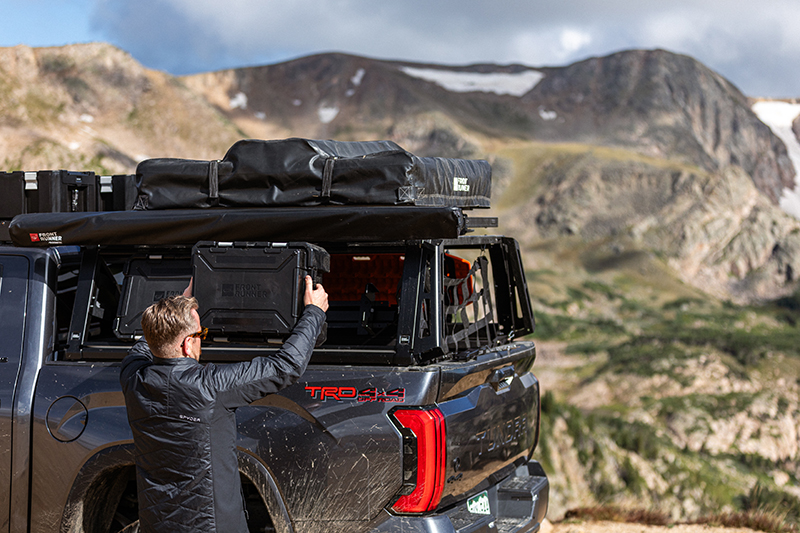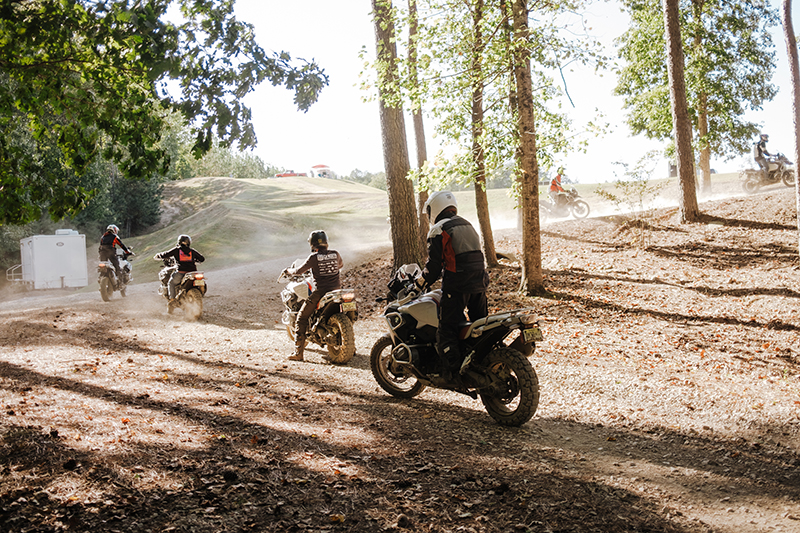Exploring and testing Four Wheel Campers’ Ram 3500 truck has made a case for being an exceptional alternative to building out a van
“What is this?” “Wow!” “Are you serious?” “This is unbelievable!” Those were just a few of the questions and comments I received when I test drove Four Wheel Campers (FWC) new vehicle/camper build. Over a four-week period, I tested the vehicle/camper in the wilds of Montana and Wyoming (view recent web article: Western Ramble on the OutdoorX4 website HERE). Simply put, it performed exceptionally.
As I conversed on the phone with Dan Welty, FWC’s Vice President, he informed me that FWC intentionally built this vehicle/camper combination to accommodate and highlight long term travel and adventure. Sounds like a recipe for van life, right? Well, the combination of a diesel-powered truck, a flatbed, and pop-top camper created much more than a van!
Vehicle Base
The vehicle of choice was a 2021 Ram 3500 with the Cummins 6.7 Turbo Diesel with an eight-foot bed. The truck came equipped with the Laramie package and was black in color. Ram’s truck interiors continue to stand out with suede leather-wrapped, heated/cooled seats; 8.4-inch touch screen; numerous power/charging outlets; and a plethora of other options to create a refined, comfortable drive. The Cummins 6.7 diesel generates 1,000 pounds of torque; it “threw me back” in my seat when I stepped on the skinny pedal. With a payload of roughly 4,600 pounds, the camper is not a weight issue.
Aluminum Tray
Once the truck arrived at FWC headquarters in Woodland, California, the eight-foot factory bed was removed. In its place, a Norweld aluminum tray was installed. Norweld, an Australian based company, specializes in designing and engineering aluminum trays and canopies. Brilliantly placed underneath the flatbed tray on each side are three storage compartments that offer copious amounts of storage. The tray is equipped with an igneous internal 10-gallon water tank. With these attributes, the foundation is set. Now, what to put atop it?
Camper
Obviously, FWC could have installed any of their flatbed models to the Norweld tray. However, they chose the six-foot-long Hawk Flatbed Camper. This added two feet on the tray and, thus, added space for an extra storage compartment as well as a place to stow the spare tire. The camper includes all the creature comforts expected: heater, full kitchen, inside/outside showers, king bed, dinette, and solar panels. FWC installed two Battle Born Lithium batteries to power everything within the camper. Amazingly, with solar panels mounted on top, charging the batteries inside, the setup provides up to nine days of power! Talk about off the grid!
The camper offers a very well-designed living space—comfortable for lounging in as well as sleeping. The pop top is simple and functional, and we set-up the camper within minutes. The layout feature we most appreciated was the rear dinette positioned in front of a large viewing window. It provided a great place to sip coffee, look for wildlife, and prepare food.
Suspension
We drove the truck/camper down numerous dirt roads while exploring the wilds of Montana and Wyoming. To address the ride comfort, FWC installed a three-inch suspension upgrade from American Expedition Vehicles (AEV). The Bilstein shocks ensure that the truck camper drives in a comfortable, confident manner. Overall, comfort was amazing. As we drove through a creek bed, I appreciated the added clearance. The upgraded springs handled the weight of the camper and gear without an issue; however, Dan informed me that they will probably add a couple of air bags in the rear to increase stability and to level the slight sag of the vehicle/camper. With the AEV suspension, the truck and camper cruised down dirt roads with comfort and confidence.
Wheels and Tires
FWC upgraded the wheels and tires with Trail Ready Wheels and Maxis Razar MT 37-inch tires. The wheel and tire combination worked as intended. The Trail Ready Wheels were powder coated black and brilliantly complimented the truck’s color. Tire pressure was set at 65 pounds (rear) and 62 (front). Those pressures made the truck camper stable while cruising down the highway. Without incident, the Maxis tires “ate up” the miles of gravel and dirt roads in Wyoming and Montana. Tire noise was present but minimal when driving on tarmac.
Protection
The Ram truck and camper had protection added in the form of front and rear bumpers by Trail Ready as well as rock sliders by White Knuckle Offroad. Both bumpers were customed designed for the truck and flatbed tray. It worked! The fit and finish was functional and attractive. Dan informed me that FWC will be adding a winch to aide in vehicle recovery. With the truck and camper having such a long wheelbase, they decided to install rock sliders for added protection. The White Knuckle sliders add not only protection to the sides of the truck but, also, create a usable step. The step allows easy access to opening and closing the latches to the pop top of the camper.
The common question I received during my travels was the cost of this setup. Dan informed me that tray and camper cost $50-60K plus, $4-6k in truck modifications. The beauty of the setup is that the adventurer can find a truck that meets his or her needs and budget. The new 2021 Ram was roughly $70k; bringing the grand total in the $140k range. Inexpensive? Obviously not. But price a built-out Sprinter Van at $200k plus and I can attest that this truck and camper setup can adventure and travel to many more places than a Sprinter Van. One could pocket the $40-60K of cost savings and use it to—travel. Regardless, FWC’s truck and flatbed camper proved a different and viable option to “van life.”
Conclusion
In today’s vehicle and camper world, companies offer many good, viable options. Lucky for us! Deciding might be the toughest part! The Four-Wheel Hawk Flatbed model is a worthy consideration for long-term travel. The space and amenities allow for adventures short or long. Mounted onto a storage rich Norweld tray, numerous adventure toys and equipment stow nicely. Living out of it for a long-term period would be comfortable and viable. The only problem? Where to go?
Final Considerations and Thoughts:
-The adventurer is limited on where he or she travels. It’s a large setup.
-The diesel engine offers plenty of torque/power. Miles per gallon averaged 12-14.
-Storage space is plentiful.
-Be ready! Many people will ask questions about this rig.
-The Norweld Tray is superiorly engineered and stylish at the same time.
-The Hawk Camper comes with inside and outside showers. There’s nothing like a warm rinse after a day playing in the outdoors.
Learn more about Four Wheel Campers by visiting their website at www.fourwh.com.
OutdoorX4 Magazine – Promoting responsible vehicle-based adventure travel and outdoors adventure




